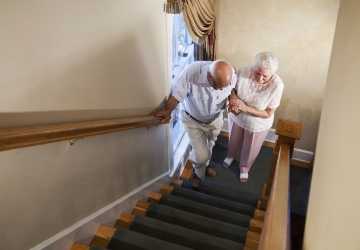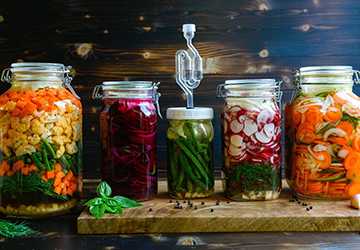Living with Chronic Pain: Adapting Your Home for Better Comfort and Mobility
Are you dealing with ongoing pain every day? Living with chronic pain means it's always there with you. It doesn't go away when you wake up, stays with you all day, and makes it hard to sleep at night.
This pain makes even simple actions hard. Suddenly, your own home feels dangerous. Moving around is challenging; the stairs feel huge, and reaching the kitchen counters is like reaching the moon.

Your home should make you feel comfortable, warm, and welcome, but in the modern world, it can become your enemy.
Can you imagine if we said you could make your home a pain-free environment by making some simple changes?
This blog post will teach tips for modifying your home to enhance comfort and accessibility. Believe us, your body (and mind) will be grateful.
Let's get started!
Why Your Home Needs a Pain-Friendly Makeover
Your home should be where you can go and find refuge from the world, not a warzone every morning. When chronic pain is with you, every corner of your home seems as if it has the potential to harm you.
But a few intelligent changes can help. Reaching high cabinets and using stairs become smooth.
Comfort is crucial. Imagine moving without pain.
The sooner you start, the better. Delaying causes unnecessary struggle. Your body has resisted enough - it's time to give it the home-court advantage it deserves.
Are you ready to change your home and life?
Transforming Your Space: A Pain-Free Home Guide
Now, let's look at some of the best strategies for managing your home environment and making it work for you instead of against you.
These are not just concepts but solutions that can be applied daily.
1. Ergonomic Furniture
Have you ever felt your furniture is planning to get the better of you? This allows ergonomics to take a stand: You call it your comfort revolution.
Ergonomic chairs aren't restricted to the workplace. They can be your best friend in the living room. Search for those with controls for the lumbar region and armrests.
Remember your bed. Most people know a good mattress can make or mar your day. Memory foam? Adjustable base? Discover what is effective and invest in it. Your bed is where you spend a third of your life; it should be worth it.
2. Accessible Layout
Let's get decorating crazy or begin decorating sensibly. The former concerns design aesthetics, and the latter design functionality.
When moving around your home, treat it like a racetrack where you prefer smooth curves over sharp ones. Start by clearing pathways. If a lovely coffee table is blocking your way, either take it away, move it somewhere else, or shift it around. You'll love having wide, clear corridors with no obstacles.
Pro tip: group like items together. Meds, water, and snacks should be accessible and close to wherever you're most comfortable, eliminating unnecessary movement.
3. Pain-Relief Tools and Gadgets
This takes us to the era of pain-eradicating devices, but with a twist – for comfort.
Here's your must-have list:
● Heating pad: For those days that one wakes up with a few discomforts around the body.
● Massage gun: House physiotherapy, anyone?
● Electric recliner: Sitting back, relaxing, and doing nothing is sometimes necessary. Grabber tool: Stretch up to the sky (or the high shelf)
● Smart home devices: Why not let Alexa do it for you
4. Non-slip flooring and Rugs
So, let's discuss the topic you stand on literally and metaphorically. Slippery floors are a real danger, and you can slip on them.
Try to use non-slip vinyl or textured tiles for the house's flooring. They're not only safe, but they can also look quite glamorous. As for those soft rugs you see, stock up on some rug grippers. They are cost-effective, simple to fit, and can prevent you from falling over.
5. Adjustable Lighting
Well, it is not only about turning on the light. It is about vision in the direction and the prevention of eye fatigue. So dimmer switches are your new best friend. Bright for working and soft for leisure.
Task lighting is another type of lighting that should be noticed. A good desk lamp can help when reading or crafting, as it will not strain your eyes or cause a sore neck. And for those midnight bathroom trips, night lights activated by motion sensors should be considered the best inventions ever.
6. Bathroom Modifications
The bathroom can be pretty slippery. With a few changes, you can turn it into your spa. Start by installing grab bars – they're not just for grandma's house anymore. Put them where you struggle to stand or need extra support: near the toilet, in the shower, etc.
A shower seat is one of those inventions that can transform a painful activity into a pleasant experience. And a handheld showerhead? It is like bringing the water to you instead of bending over to get it.
7. Kitchen Accessibility
Preparing food should not be painful for the neck, back, or knees. Whether fully functional or just for show, let's transform your kitchen into a room that works for you.
First up: storage. Store frequently accessed items on the higher shelves. The fancy serving platters that you use for a once-a-year event only? They can climb up high.
Heavy items should be stored on a rolling cart. It is as if one has a personal assistant who will help move the pots and pans. If you have the money, consider barrier-free countertops that can change the height. They are a blessing to those with different levels of pain.
Just remember, these changes do not have to be made simultaneously. Begin with a single strategy, then implement the next one if the first is effective, and so on.
Life without pain is not far away from you.

Transform Your Home, Transform Your Life
Stop living with the pain. Your home has been your enemy for too long—it is time to make it your friend. You don't have to go through this every day; every day you do is wasted.
Think about it. At this time, you are struggling with your chronic pain while others are enjoying it. Why not join them?
Your comfort, mobility, and life can all be summed up in one word: your hands. What are you waiting for? Take that first step today!
Frequently Asked Questions
Q. What is ergonomic furniture, and how does it help with pain?
Ans: Ergonomic furniture is specially developed to comfort body posture. It relieves pressure in muscles and joints, thus eradicating pain.
Q. How can I make my bathroom more accessible?
Ans: Place grab bars by the toilet and in the shower to ensure the person can always find something to hold on to. A shower chair should also be added to provide comfort to the user while using the shower.
Q. What are the benefits of adjustable lighting for chronic pain?
Ans: Flexible lighting decreases eye stress and head discomfort. This way, dimmer switches allow you to adjust the lighting depending on your pain tolerance. Lighting also enhances visibility, which decreases the possibility of experiencing.
Q. How can non-slip flooring prevent accidents in my home?
Ans: It minimizes the possibility of people slipping on the floor and falling since non-slip flooring offers a better grip. This is especially important for patients with chronic pain or any difficulty in moving from one place to another.





